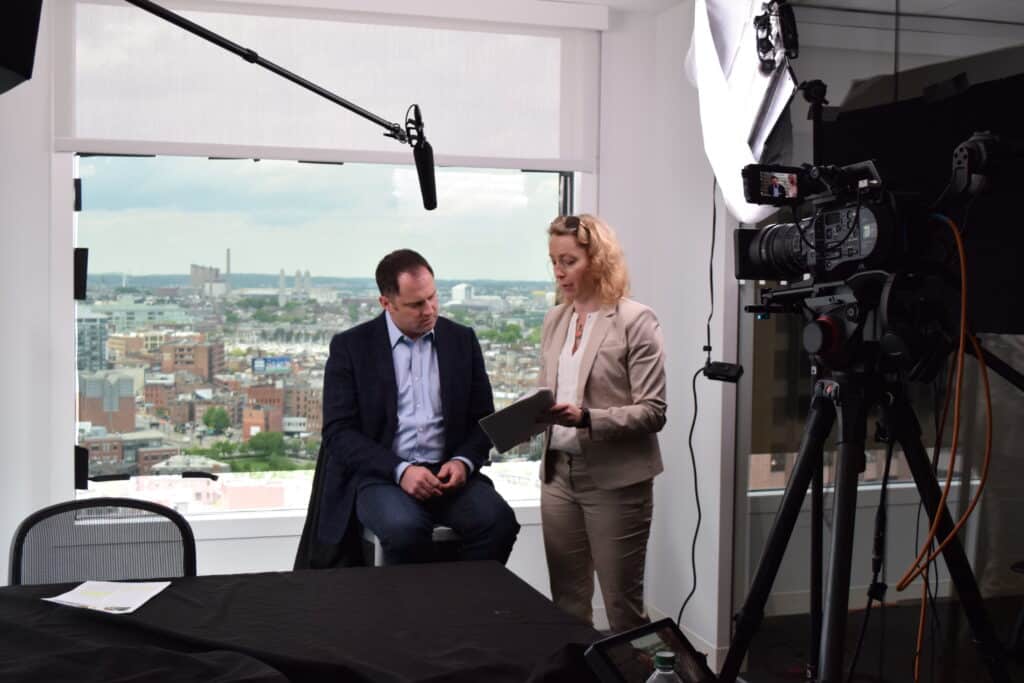Video Interviews Tips: Mastering the Art of Video Interviews

The art of mastering video interviews requires a blend of precision and finesse, from meticulous planning to seamless execution.
Crafting compelling narratives through visual storytelling demands a keen eye for detail and strategic foresight. Whether navigating the intricacies of pre-production logistics or honing post-production enhancements, the journey to mastering video interviews is a multifaceted endeavor that promises to unlock a realm of possibilities.
Discover the key strategies and techniques that can elevate your video interviews to new heights and captivate audiences with authenticity and impact.
Table of Contents
Preparing for Successful Video Interviews
Proper planning and preparation are fundamental prerequisites for executing successful video interviews. When embarking on the journey of creating impactful video content, meticulous pre-production steps are crucial. This involves defining clear goals, selecting suitable locations with optimal lighting, and creating detailed schedules for the shoot day.
All necessary equipment should be tested beforehand, and backup plans must be in place for any technical glitches. Providing clear instructions to on-screen talent, conducting rehearsals, and ensuring a comfortable environment are vital for eliciting authentic responses. Dressing appropriately, avoiding distractions, and fostering natural conversations further enhance the authenticity and engagement of the video interview.
Benefits of Video Interviewing
When considering the advantages of video interviewing, one immediately recognizes its ability to offer a dynamic and engaging platform for interaction with audiences. Video interviews showcase authenticity, building trust through a more captivating medium than traditional text-based content. They add a human touch to the message, making it more relatable and memorable.
Compared to plain text, video interviews have a higher retention rate, capturing attention effectively. Additionally, video interviews offer the opportunity to convey emotions, facial expressions, and body language, adding depth to the communication. This visual and auditory richness enhances the overall impact of the interview, making it a powerful tool for engaging viewers and conveying messages effectively.
Effective Interviewer Techniques
An essential aspect of conducting successful video interviews lies in mastering effective interviewer techniques. Interviewers play a pivotal role in guiding the conversation, drawing out insightful responses, and creating a comfortable environment for the interviewee.
To excel in this role, interviewers must actively listen, maintain good eye contact, and ask open-ended questions that encourage detailed responses. Being calm, confident, and adaptable to unexpected responses are key traits of a proficient interviewer.
Additionally, starting with a softball question can help boost the interviewee’s confidence, setting a positive tone for the rest of the interview. By employing these techniques, interviewers can facilitate engaging and authentic conversations that resonate with the audience.
Strategic Shoot Day Planning
Mastering the strategic planning of shoot days is essential for ensuring the smooth execution and successful outcome of video interviews. It is crucial to allocate sufficient time for crew setup, lighting adjustments, and conducting interviews authentically.
When planning a shoot day that can last up to 10 hours, prioritize capturing essential shots efficiently to avoid unnecessary delays. Strategic planning involves mapping out the shots needed, adhering to schedules, and being prepared to adapt to unforeseen circumstances.
Double-checking all arrangements ensures that the day progresses smoothly and stays on track. Effective shoot day planning sets the foundation for a productive filming session and contributes to the overall quality of the video interview.
Enhancing Video Quality in Post-Production
Enhancing video quality in post-production involves refining visual and audio elements to elevate the overall production value. In post-production, professionals use tools (like Adobe After Effects) and techniques to enhance the video’s clarity, color accuracy, and audio quality.
Color correction can help maintain consistency throughout the video, while audio editing ensures clear sound without background noise distractions. Adding transitions, graphics, and text overlays can make the video more engaging and informative. Additionally, adjusting the brightness, contrast, and saturation can improve the overall visual appeal.
Importance of Location Selection
Selecting the appropriate location for a video interview is a critical decision that significantly impacts the overall quality and effectiveness of the production. The chosen location should have good lighting to ensure clarity and visibility for all participants.
It is essential to consider background noise levels to avoid distractions during the interview. A clean and visually appealing backdrop can enhance the professionalism of the video. Additionally, selecting a location with minimal interruptions and distractions can help maintain the focus and flow of the conversation.
Building Trust Through Authenticity
Establishing a genuine connection with the audience through sincerity and transparency is crucial for fostering trust in video interviews. Authenticity plays a vital role in engaging viewers and building credibility. Viewers are more likely to connect with content that feels honest and real.
To achieve this, interviewers and participants should prioritize being themselves and sharing genuine experiences and insights. Avoiding scripted or rehearsed responses can help create a natural and relatable atmosphere. Authenticity allows for a deeper connection with the audience, leading to increased trust and engagement.
Maximizing Audience Engagement
To captivate and retain viewers effectively during video interviews, maximizing audience engagement is key to creating a lasting impact and fostering a strong connection. Engaging the audience involves various strategies, such as maintaining eye contact, using a conversational tone, and encouraging viewer interaction through comments or questions.
Including visually stimulating elements like graphics or animations can also enhance engagement. Additionally, structuring the interview in a way that builds suspense or curiosity can keep viewers interested throughout.
Share:
Search our blog:
Follow us on:
